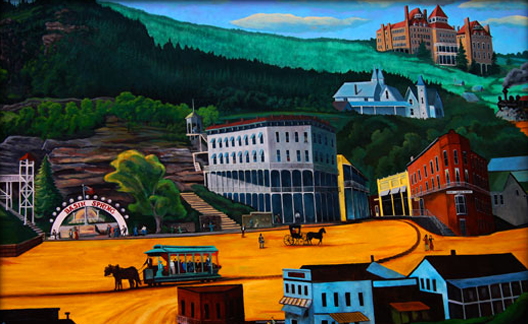Eureka Springs: Southern Gothic
by Joshua Heston
Eureka Springs, founded on July 4, 1879, and tucked into a deep Ozark hollow between East and West Mountains, is an eclectic, Southern Gothic contradiction. Notable for its number of beautiful churches and lying beneath the watchful eyes of the second largest statue of Christ in the world, the town revels in its ghost stories, its UFO conferences and its irreverent post-sixties’ nature.
The Crescent Hotel is listed by some as the most haunted in the Ozarks and ghost tours are given regularly. The Thorncrown Chapel just outside of town — a majestic creation of wood and glass — is considered “one of the finest religious spaces of modern times” by some critics. According to legend, Native Americans considered the valley’s springs to possess healing qualities. It is believed that white settlers did not learn of the springs until 1856.
The waters were, however, already being exploited by the time of the Civil War as a Dr. Alvah Jackson opened a hospital for injured soldiers, doing a brisk business treating both Confederates and Yankees with “miracle waters.” By the 1870s, claims of miracle cures from the water had spread.
The town, under the able leadership of a certain General Powell Clayton, attracted thousands. A boomtown was created. Clayton, a former Union general, is credited with spearheading plans to promote the area. His efforts to attract the railroad proved fruitful. The development of the Eureka Springs & North Arkansas Railway Company was instrumental in ushering in an age of riches and graciousness for the town.
The 20th century, however, was not kind to Eureka Springs. In time, the nation’s craze for miracle water cures waned. World War I, the Depression, and World War II led to immense social changes for the region. The town thought of as a cultural jewel set amidst the roughness of the Ozarks had clearly lost its shine.
By the ’60s, the city again attracted attention, this time for its low cost of real estate. Many of the decade's social revolutionaries came looking for a beautiful, easy-living place to settle. In time, the resulting influx of artistic, counter-culture hippies permanently changed the face of Eureka Springs. An arts community developed and with it, a culture unique to the Ozarks.
Here, in the heart of the nation’s Bible belt are vibrant Greenwich leftists rubbing shoulders with “Area 51 type” paranormal enthusiasts, all mixed with traditional Ozarkers. The occasional tourism minded land developer seems to be thrown in for good measure.
Today, a friendly — albeit prickly — relationship exists amongst the townsfolk constantly working to balance financial success against personal ideals.
Perhaps it is this continued duality that proves so intriguing to visitors and residents alike.
May 3, 2008
From Charles Morrow Wilson:
“...Eureky, listed on contemporary maps as Eureka Springs, is an ever astonishing mountainside town in what were then backhill Ozarks of Carroll County.
At the turn of the century, the discovery of allegedly medicinal waters in the uniquely vertical settlement had drawn a stampede of real or would-be sick people, ranging from the hopelesssly stricken or violently insane to the usual majority of comparatively healthy hypochondriacs and their accompanying kin.
“Thus, almost overnight, the peculiarly inaccessible moonshiners' outpost had been changed into the biggest as well as the flimsiest town in the Arkansas Ozarks, with a transient and immigrant population of at least 25,000.
“Most of the influx presently seeped and simmered away, but at the time of our pilgrimage to Uncle Greene's, Eureky was the wealth-and-wonder capital of the Ozarks.”
— pages 24, 25, Wilson, Charles Morrow, The Bodacious Ozarks: True Tales of the Backhills, Pelican Publishing Company, 1959.
Basin Park Hotel
Excerpt from the “Cutter's Guide” of 1884 —
The hotels and boarding houses of Eureka Springs are numerous. The Perry House is the only real first-class hotel in the city; and we say this with no disparagement of the Southern, Hancock, Harper or other houses that would be the first-class houses but for the Perry House.
The Perry House 1881-1890
This first-class hotel was built around two years ago by Mr. Joseph Perry, of Colorado. Perry was “a gentleman who has built more good hotels on the line of the railroads in Kansas City and Colorado.”
Perry came to Eureka Springs as an invalid and considered incurable, but he was so quickly and perfectly cured of sufferings that he felt grateful enough to build a fine hotel.
He has not only build a fine house but has furnished it throughout in the best manner and keeps it in first-class style in every particular.
Excerpt from a 1907 hotel brochure —
The 1905 Basin Park Hotel (a hotel for a day or a year)
The Basin Park Hotel ranks among the largest and most modern resort hotels in the country. A fire-proof structure, built at a cost of $150,000.
The hotel occupies a central position at the resort, adjoining the famous Basin Spring.
From every floor bridges reach to the mountain, conveniently leading to pleasant walks, also affording guests a feeling of great security in case of fire.
The Basin Park is equipped with all modern conveniences, including fine electric elevator with every known safety appliance, electric lights, hot and cold water in every room, 100 bed-rooms, 50 with private baths, telephone in each guestroom and guest’s bathroom on every floor.
The dining room will seat 200 persons. Lobby, office, barber shop and drugstore on the ground floot. The seventh floor is devoted to ball-room, sun parlor, reception, grill and billiards room.
plate 1. Mural excerpt, Louis Freund, Dorothy Marie, Don Kennett, Betty Rotramel (Eureka Springs Guild of Artists and Craftspeople), June 1, 1979.
The 1979 mural (recently restored to its former glory) reveals Basin Spring, a grotto and central spring that started this health resort boomtown in the late nineteenth century.
Center, the Perry House (destroyed by fire in 1892 and replaced by the Basin Park Hotel in 1905). The Basin Park Hotel stands today.
At central right is the trademark Flat-Iron Building (a reconstruction today). And at upper right is the famed Crescent Hotel high atop East Mountain.
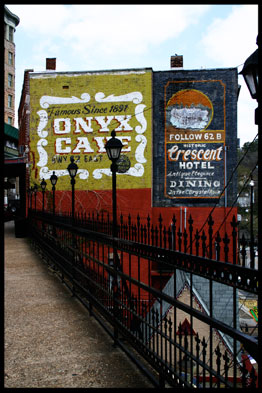
plate 2. Buildings on Spring Street, across from the Basin Park Hotel. The Eureka Springs historic district is built between two mountainsides. It is common to see an elevation drop of over two stories between adjoining streets. April 17, 2008.
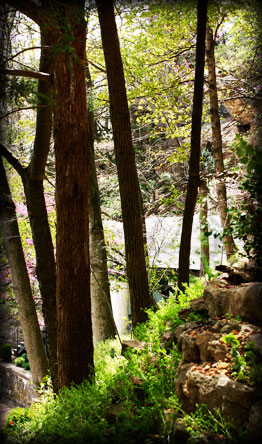
plate 3. The central path in the Basin Spring Park meanders high above the street in downtown Eureka Springs. Due to the natural beauty of the area, it's not hard to see why many have fallen in love with the town. Here, a glimpse of the bandshell roof may be seen through the trees. April 17, 2008.
The Basin Spring
Basin Spring, the legendary Indian healing spring known to Native Americans, and early pioneer settlers, is the heart of Eureka Springs. The first crowds of health seekers encamped here in 1879, drawn by the promise of near-miraculous cures.
The city was named on this site July 4, 1879. The first governing body, the Committe of Twelve, was elected here in August, 1879. The first townsite survey was platted with the spring and surrounding reservation of protected land as its centerpiece. A plan of lots, blocks and streets, extending in all directions, encompassed many other nearby springs.
In 1890, the Eureka Springs Board of Public Affairs created a formal setting for the spring with limestone walls, fountains and walks. About 1921, the original wood gazebo was replaced with the bandshell still regularly used for public performaces.
Following World War I, the Doughboy statue was placed as a memorial to local men who served their country.
Although Basin Spring is the centrally located and perhaps most visible spring in town, there are numerous historic springs in the immediate area:
• Calif Spring • Sweet Spring • Harding Spring • Grotto Spring • Magnetic Spring • Cave Spring • Little Eureka Spring • Onyx Spring
Article Credits:
historic information regarding Eureka Springs landmarks are made available to the public by a series of plaques found throughout the town. StateoftheOzarks thanks the Eureka Springs Chamber of Commerce and the Community Development Partnership for making this information available. Additionally, special thanks to Glenna Booth, Arkansas Community Excellent Coordinator of Eureka Springs.

plate 4. The Crescent Hotel rises from extensively manicured gardens filled with tulips and hyacinths and studded with redbud and lilac. April 17, 2008.
A Castle In the Sky
by Joshua Heston
Atop West Mountain, the Crescent Hotel stands out nearly as well as the Christ of the Ozarks statue situated a few hills over. The ambitious dream of Eureka Springs' founding father, General Powell Clayton, the hotel stood as a prime example of everything Eureka Springs had become by the 1890s.
Contemporary accounts tell of the "carriage set" arriving for weeks of high-end relaxation. In the midst of these Ozark hills, where few had even seen an indoor toilet, the Crescent boasted steam heat, electric lighting and an exotic menu featuring, among other things, a crab and cheese casserole.
As the fortunes of Eureka Springs waned in the 20th century, the "Grand Old Lady of the Ozarks" suffered a series of downturns.
The “castle in the sky” simply proved too expensive to maintain.
Converted first to a girls’ school, then a dubious cancer hospital by the late ’thirties, then closed for a time in the ’forties, the facility fell further into disrepair.
The short span of 1937 to 1940 contributed greatly to the mythology of the Crescent. Under the ownership of renegade “doctor” Norman Baker, macabre tales spread. Today, some list the facility as the most haunted location in the Ozarks. A fire destroyed large portions of the fourth floor in the 1960s.
Fortunately, under past and current owners, the Crescent Hotel has been largely returned to its former glory.
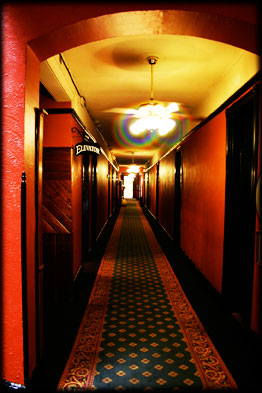
plate 5. A hall on the third floor of the Crescent Hotel. April 17, 2008.
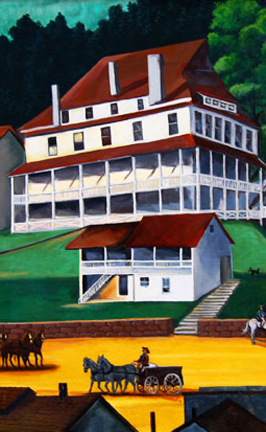
plate 6. The Southern Hotel, destroyed by fire on November 12, 1932.
The Southern
The Southern was built in the year 1880 adjacent to Basin Spring and some 25 feet above it on the hillside. L.M. Rainey of Missouri, its original ownder, sold the hotel to W.E. Beatty in 1886, at which time it was acclaimed to be one of the city's two finest hotels, the other being the Perry House, situated on the opposite side of the spring.
Damaged in the Great Fire of 1890, The Southern was repaired and enlarged to 100 rooms, gas lighted throughout, and boasting an outdoor “elevator” which lifted guests from Basin Spring level to hotel entrance.
William McQuerry owned the hotel in 1932 and had renamed it Southern Home. On November 12 that year, this handsome wooden structure which stood for just over half a century was destroyed in what the Times-Echo and other newspapers described as “a spectacular blaze.”
Editor’s note: Even today, the threat of fire is very real in Eureka Springs and a robust fire department stands ready to prevent the losses typical of the town's past. Major fires occurred in Eureka Springs in 1883 and 1890.
